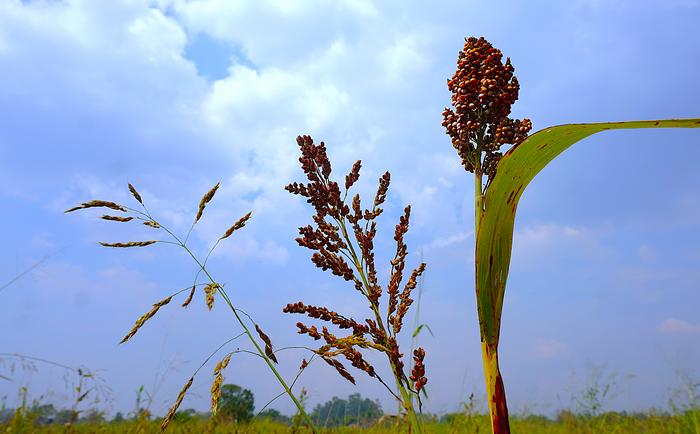In an era defined by rapid climate change and escalating environmental pressures, the agricultural sector faces unprecedented challenges. Food crops, vital for human sustenance and countless industries, must adapt swiftly to endure hotter temperatures, erratic rainfall patterns, and increased incidence of flooding. In a groundbreaking advancement, researchers at the University of Hawaiʻi, collaborating with international partners, have pioneered an innovative genomic technique poised to revolutionize crop breeding for climate resilience. Their findings, recently published in Nature Climate Change, illuminate a promising path for utilizing global plant genebanks to accelerate the development of climate-adaptive crop varieties.
Plant genebanks are repositories safeguarding the world’s agricultural biodiversity, housing millions of seeds and genetic materials representing a vast array of crop varieties and wild relatives. These living libraries preserve genetic traits accumulated through millennia of evolution and human cultivation, making them critical repositories for future crop improvement. The University of Hawaiʻi team has leveraged these genetic archives to design a method that integrates environmental data with genomic information, allowing breeders to predict how specific plant genotypes will perform under future climate scenarios with remarkable efficiency.
The core of this innovation lies in the technique of environmental genomic selection, which transcends traditional breeding constraints. Conventional methods require extensive field trials across multiple locations and seasons—processes that are time-consuming, resource-intensive, and vulnerable to climatic unpredictability. By combining DNA sequencing data with detailed climate modeling, environmental genomic selection enables researchers to simulate various environmental pressures and forecast plant performance without needing exhaustive physical trials. This approach not only accelerates the breeding cycle but also facilitates targeted selection of crop varieties best suited to anticipated ecological conditions.
To validate their approach, the research team focused on sorghum, a cereal grain known for its versatility as a food source, livestock fodder, and biofuel feedstock. Sorghum is cultivated extensively worldwide, especially in regions vulnerable to drought and heat stress, making it an exemplary candidate for testing climate-adaptive breeding techniques. By analyzing a curated “mini-core” subset of sorghum accessions that encapsulate the species’ genetic diversity, the team demonstrated how environmental genomic selection can identify parental lines most likely to yield progeny resilient to future climate challenges.
This methodological breakthrough holds transformative potential beyond sorghum, encompassing a broad spectrum of crops including barley, pepper, cannabis, and many others. Crucially, it addresses the practical limitations of handling vast genebank collections by prioritizing genetically diverse yet manageable subsets, enabling breeders to make informed decisions with more agility and precision. By forecasting plant responses to complex climate variables such as temperature extremes, soil moisture variability, and pathogen pressure, environmental genomic selection empowers breeders to develop varieties that can thrive under increasingly volatile agricultural conditions.
The implications extend deeply into global food security frameworks. As climate change indiscriminately alters growing conditions worldwide, regions highly dependent on specific crops may find their local germplasm insufficient for adaptation. The study underscores the strategic importance of international collaboration and germplasm exchange, advocating for a more integrated approach to utilizing global genebank resources. Such cooperative efforts ensure that genetic diversity, the cornerstone of crop resilience, is optimally harnessed to meet looming environmental challenges.
Furthermore, this technique promises to optimize resource allocation within breeding programs. By focusing field trials on selectively predicted genotypes, research institutions can reduce costs and accelerate timelines. This is especially vital given the increasingly narrow window for responsive action against climate impacts. The ability to preemptively identify elite breeding lines accelerates the incorporation of traits like drought tolerance, heat resistance, disease suppression, and improved nutrient use efficiency into new crop cultivars.
Michael Kantar, a leading co-author and scientist at the University of Hawaiʻi’s College of Tropical Agriculture and Human Resources, emphasizes the urgency and utility of this approach. He articulates that environmental genomic selection represents a scalable model that can be adapted to diverse crop species and agricultural systems worldwide. The integration of genebank data with predictive climate models represents a leap forward in aligning plant breeding objectives with the complex realities posed by climate change.
Beyond its scientific rigor, the research offers a compelling strategy for conservation and sustainable agriculture. Maintaining and utilizing the genetic wealth stored in genebanks not only safeguards agricultural heritage but also fuels innovation in crop improvement. By harnessing these vast genetic resources with modern genomic tools, breeders can sculpt crops to meet future needs, bolstering resilience and productivity simultaneously.
As climate variability intensifies, this fusion of genomic science and climate data ushers in a new era for crop breeding policy and practice. It delineates a framework for proactive adaptation rather than reactive mitigation, equipping agricultural systems to anticipate and counteract environmental stressors before they jeopardize yields. This paradigm shift aligns with global sustainability goals, ensuring that food production systems remain robust in the face of shifting environmental baselines.
In conclusion, the University of Hawaiʻi and collaborating researchers have charted a promising course for future-proofing global agriculture. By blending genebank genetic diversity with environmental forecasting through genomic selection, they provide a powerful toolkit to breed crops capable of thriving amidst climate uncertainty. This innovation highlights the indispensable role of scientific ingenuity paired with international cooperation in securing the foundation of global food security for generations to come.
Subject of Research: Climate-resilient crop breeding using global plant genebanks and environmental genomic selection.
Article Title: Prioritizing parents from global genebanks to breed climate-resilient crops
News Publication Date: 29-May-2025
Web References: https://www.nature.com/articles/s41558-025-02333-x
References: DOI 10.1038/s41558-025-02333-x
Image Credits: University of Hawaii
Keywords: Climate change, climate change adaptation, food crops, farming, sustainable agriculture, crop domestication




